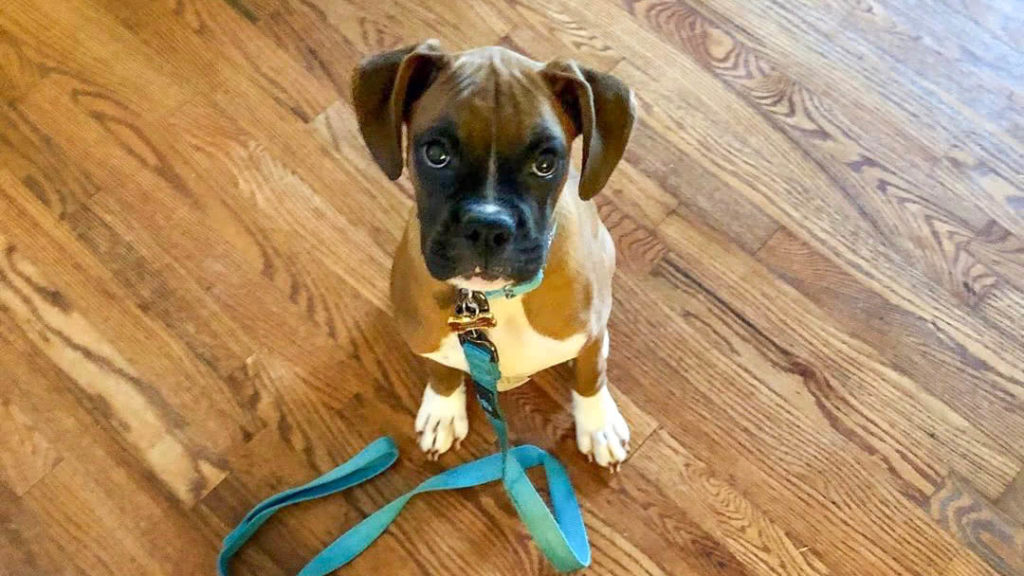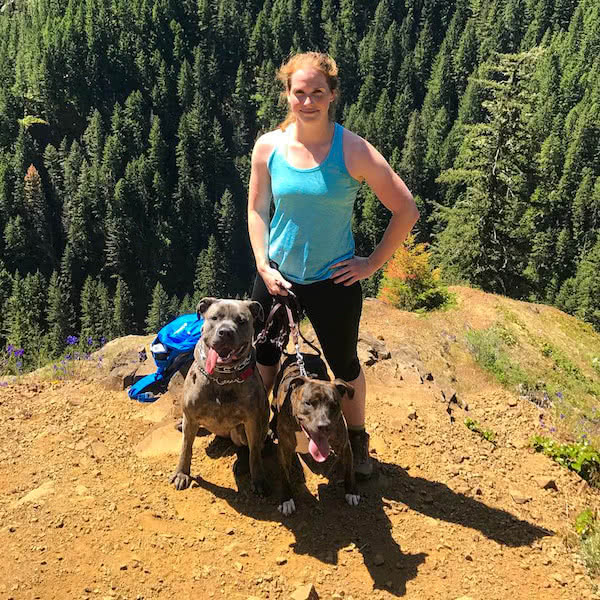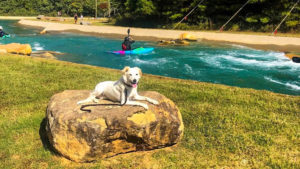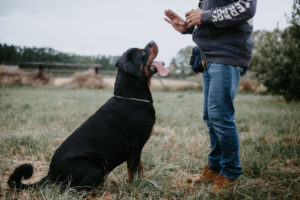There’s a lot more to loving and living with dogs in Charlotte than hopping dog-friendly breweries or taking pet pictures with Santa (though we’re here for those, too).
We live differently with our dogs than we used to – and the more we include them in our social lives, the more important it is for us to have a strong bond and good communication with them.
Last time, we broke down four big benefits of training your dog. This time, we’ll talk puppy training and how to choose the dog training technique that’s right for you.
When should I start training my puppy?
Training a puppy starts the day you bring him or her home – which, for most people, is when your puppy is between 8 and 10 weeks old.
Start basic house behavior training like crate training, housebreaking and waiting politely for food right away. I also recommend getting your puppy on a food, water and relieving schedule, which will help with housebreaking.
You’ll also want to help your puppy get used to being in a crate. Use some fun crate games to help him or her create a positive association. Young puppies need to get used to being solo, and spending a good amount of time alone in a crate can help prevent unhealthy separation anxiety issues.
View this post on InstagramA post shared by Rebecca Golian | LoveintheLead (@loveintheleadclt) on
When can I start socializing my puppy?
You can socialize a young puppy around other people, animals and environments, but be cautious and keep in mind your puppy won’t be fully vaccinated until 16 or 17 weeks old.
I recommend you start basic obedience training once your puppy is fully vaccinated. You can choose between puppy classes, private lessons or a puppy board and train program. If you have the time and knowledge, you can also train your puppy on your own with the help of some great puppy-raising books and online videos.
Which dog training techniques are right for my dog?
If you ask this question of 10 different dog trainers, you’ll probably get 10 different answers. Before I give you mine, let me start with a quick breakdown of how dogs learn.
You might be familiar with the term “operant conditioning,” or the idea that we modify the strength of a behavior using reinforcement or punishment. In simple terms, dogs are more likely to repeat a behavior when it’s rewarded – for example, with food, praise or a toy. They’re less likely to repeat a behavior when it causes something unpleasant to happen. The scientific word for this is “punishment,” but we often say “correction” with dogs.
Using markers
I believe in teaching dogs both yes and no markers.
We use the yes marker – for example, a verbal “yes” or clicker – for positive reinforcement. This teaches dogs what they’re doing when they hear the marker is what’s being rewarded.
We use the no marker for corrections. The most common is a verbal “no” in a calm, neutral tone, which teaches dogs to stop what they’re doing when they hear it.
Before we can successfully use markers, we first have to create associations with them. So we teach dogs what the clicker means by first pairing the sound of the click with a food reward. Similarly, we teach “no” by pairing the word with a correction that is appropriate for each dog.
Teaching new commands
Positive reinforcement dog training has been popular since the 1980s, and it’s a great method to use when teaching new behavior like an obedience command.
We use positive reinforcement to teach and reward desired behaviors in dogs of all ages, whether teaching a puppy, working with a recent rescue, training a service dog or modifying behavior in an older dog.
The basic premise is that the more we reward a desired behavior, the more likely dogs will offer it. Food is a common reward, but it’s not the only way to motivate dogs. If your dog isn’t food motivated or you’d just like to explore other forms of reinforcement, you can also try praise, play or toys.
We can also use our body language and the concept of “pressure” to train dogs. And we can apply negative reinforcement by removing something to increase behavior. This might mean we take away food or a toy, or apply gentle leash or spatial pressure.
View this post on InstagramA post shared by Rebecca Golian | LoveintheLead (@loveintheleadclt) on
Correcting undesirable behavior
We use corrections when we want to decrease undesirable behaviors. This is a complicated subject, and no two dogs respond to the same techniques or training tools, but here’s a brief overview of how and when to use corrections.
Just like we can use positive or negative reinforcement to teach new behavior, we can use negative or positive punishment to decrease an existing behavior. This means we’re either taking something of value away or applying something unpleasant to correct the behavior. Dogs have varying levels of sensitivity and instinctual drive, so an individual dog’s corrections should reflect and accommodate his or her temperament.
Corrections don’t necessarily have to be painful – they just need to be intolerable. They can come from a properly fitted training collar, remote collar, pet convincer (compressed air), spray bottle, etc. The goal is to make your dog not want to repeat an undesired behavior because it leads to something he or she finds unpleasant.
The fact is, nature corrects dogs all the time. Dogs correct each other, mothers correct their puppies, other animals correct dogs, etc. Dogs understand the concept of rewards and corrections. So in my opinion, corrections can be useful in some circumstances.
So which is the best dog training method?
There isn’t a single best dog training method – it’s about finding the style that’s right for your goals.
Are you trying to teach your dog something? Do you have a new puppy that doesn’t know anything? If so, you want to use reinforcement to train your dog.
Do you have a dog struggling with problem behaviors, or one that is misbehaving and your management techniques aren’t working? Then you might need to consult a trainer experienced in behavior modification.
All dogs learn the same way, but they do have different temperaments and motivators. Make sure you choose a well-rounded professional that has experience in the training style that fits your goals.
So how do you choose a trainer that’s right for your dog and his or her needs? We’ll cover that in our next dog training column in two weeks.





